Research
Alumni and Previuos Research Students:
Wideband Space-Time Code Massive MIMO systems:
 Jeremy Ice is working with the VLSI circuit design team to come up with an optimal VLSI architecture for
space-time coding techniques used in next genereation of wireless communication
systems. In this research, the focus is on designing of a MIMO-OFDM physical layer that follows the IEEE standard 802.11n.
Different VLSI techniques are examined and analyzed to obtain an efficient low-power architecture. In our experiments,
we propose a pipelined architecture to the baseline MIMO-OFDM physical layer. By exploiting the
dynamic reconfiguration, the proposed MIMO-OFDM system can adapt to various operating modes. The team also present experimental results and analysis regarding dynamic reconfiguration.
Jeremy Ice is working with the VLSI circuit design team to come up with an optimal VLSI architecture for
space-time coding techniques used in next genereation of wireless communication
systems. In this research, the focus is on designing of a MIMO-OFDM physical layer that follows the IEEE standard 802.11n.
Different VLSI techniques are examined and analyzed to obtain an efficient low-power architecture. In our experiments,
we propose a pipelined architecture to the baseline MIMO-OFDM physical layer. By exploiting the
dynamic reconfiguration, the proposed MIMO-OFDM system can adapt to various operating modes. The team also present experimental results and analysis regarding dynamic reconfiguration.
Information Processing and Learning for Dynamic and Social Networks:
 Taylor Redden is researching estimation and information processing over dynamic networks with time varying topologies. The purpose of the research is to find algorithms that accurately and efficiently used in these networks. The research tasks include modeling and inference for information diffusion and rumor spreading, social media computing and networking, data mining, machine learning, and statistical inference frameworks and algorithms for handling big data from social networks. The second line of this research involves in attribution models for marketing and advertising, trend prediction, recommendation systems and crowd sounding.
Taylor Redden is researching estimation and information processing over dynamic networks with time varying topologies. The purpose of the research is to find algorithms that accurately and efficiently used in these networks. The research tasks include modeling and inference for information diffusion and rumor spreading, social media computing and networking, data mining, machine learning, and statistical inference frameworks and algorithms for handling big data from social networks. The second line of this research involves in attribution models for marketing and advertising, trend prediction, recommendation systems and crowd sounding.
VLSI Implemenataion of Detection Techniques in Massive MIMO Systems:
 Ian Ives is working on detection and estimation techniques for Multiple Input Multiple Output (MIMO) systems. This will include MIMO systems working with two transmit and receive antennas to massive MIMO systems with hundreds of antennas. MIMO detection and estimation falls into two categories of boosting capability: devising a better algorithm and reducing computational complexity. Devising a better algorithm involves balancing reducing error a signal produces after being transmitted through a wireless channel and reducing the strain a device will receive by trying to follow that algorithm. Reducing computational complexity can be grouped with making a better algorithm, but are not the same. Reducing computational complexity involve activities such as lowering the number of calculations a device would have to make and doing those calculations on a simpler/smaller circuit.
Ian Ives is working on detection and estimation techniques for Multiple Input Multiple Output (MIMO) systems. This will include MIMO systems working with two transmit and receive antennas to massive MIMO systems with hundreds of antennas. MIMO detection and estimation falls into two categories of boosting capability: devising a better algorithm and reducing computational complexity. Devising a better algorithm involves balancing reducing error a signal produces after being transmitted through a wireless channel and reducing the strain a device will receive by trying to follow that algorithm. Reducing computational complexity can be grouped with making a better algorithm, but are not the same. Reducing computational complexity involve activities such as lowering the number of calculations a device would have to make and doing those calculations on a simpler/smaller circuit.
Smart Irrigation and Automated Farming Using IoT Technologies:
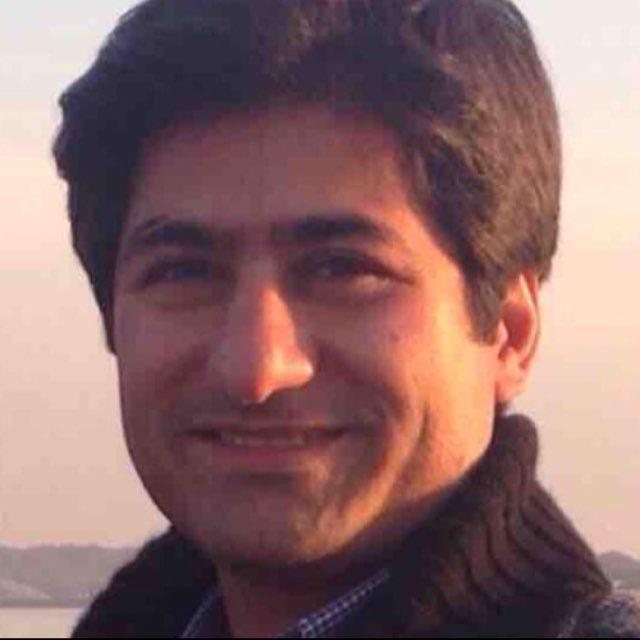 Majid Safari Abrazi works on IoT platforms and technologies for use in agriculture industry. While the popularity of the Internet of Things (IoT) continues to grow, and the need for wireless, connected, "smart" devices with it, not many agriculture industry are utilizing IoT solutions. The agriculture sector, specifically, could greatly benefit from this new technology. He is investigating the shortcomings of these products and technologies and then propose a solution to overcome such issues. His propoed solution will benefit from the current IoT hardware platform, software solution and cloud computing and virtual hardware.
Majid Safari Abrazi works on IoT platforms and technologies for use in agriculture industry. While the popularity of the Internet of Things (IoT) continues to grow, and the need for wireless, connected, "smart" devices with it, not many agriculture industry are utilizing IoT solutions. The agriculture sector, specifically, could greatly benefit from this new technology. He is investigating the shortcomings of these products and technologies and then propose a solution to overcome such issues. His propoed solution will benefit from the current IoT hardware platform, software solution and cloud computing and virtual hardware.
Super-Resolution Indoor/Outdoor Localization:
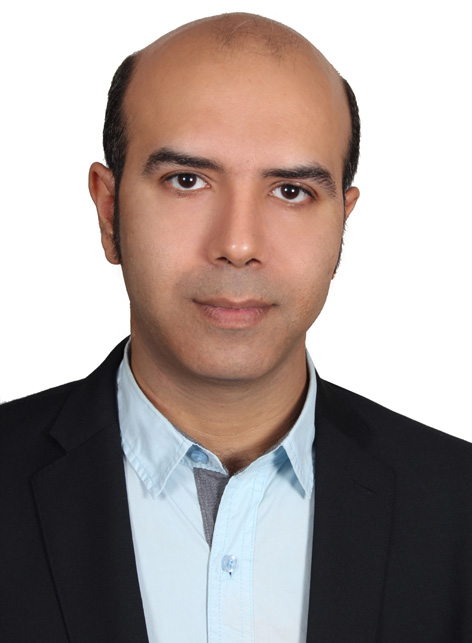 Dr. Mehdi Korki is working on super-resolution indoor/outdoor localization in Wirless Sensor Networks (WSN's). His research aims to substantially enhance the resolution and the accuracy of localization, and to reduce the bandwidth, communication resources, and computational complexity of the localization in WSNs. The project is expected to lay a solid foundation and make significant impacts to many modern applications and concepts, including Massive MIMO localization in 5G technology, localization for Internet of Things (IoT), smart cities, smart grids and energy control systems, wireless imaging sensor networks, etc.
Dr. Mehdi Korki is working on super-resolution indoor/outdoor localization in Wirless Sensor Networks (WSN's). His research aims to substantially enhance the resolution and the accuracy of localization, and to reduce the bandwidth, communication resources, and computational complexity of the localization in WSNs. The project is expected to lay a solid foundation and make significant impacts to many modern applications and concepts, including Massive MIMO localization in 5G technology, localization for Internet of Things (IoT), smart cities, smart grids and energy control systems, wireless imaging sensor networks, etc.
Power Estimation in Digital Hardware Design:
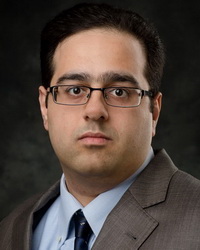 Dr. Amir Torabi worked on hardware design methodologies to reduce power consumption of System-on-Chips (SoCs).
Power management and estimation in complex SoCs and custom processors is of crucial importance to chip design companies and Semiconductor industry. These SoCs
and processors are vital parts of embedded systems used in electronic equipments ranging from laptop computers, mobile
phones to personal digital assistants. To reduce the power consumption in the final product, it is necessary to have an
estimate of the power consumption early in the design process. It is becoming essential to utilize design methodologies
to reduce and estimate power consumption at the high-level.
Dr. Amir Torabi worked on hardware design methodologies to reduce power consumption of System-on-Chips (SoCs).
Power management and estimation in complex SoCs and custom processors is of crucial importance to chip design companies and Semiconductor industry. These SoCs
and processors are vital parts of embedded systems used in electronic equipments ranging from laptop computers, mobile
phones to personal digital assistants. To reduce the power consumption in the final product, it is necessary to have an
estimate of the power consumption early in the design process. It is becoming essential to utilize design methodologies
to reduce and estimate power consumption at the high-level.
Low-Power Internet of Things (IoT) Design:
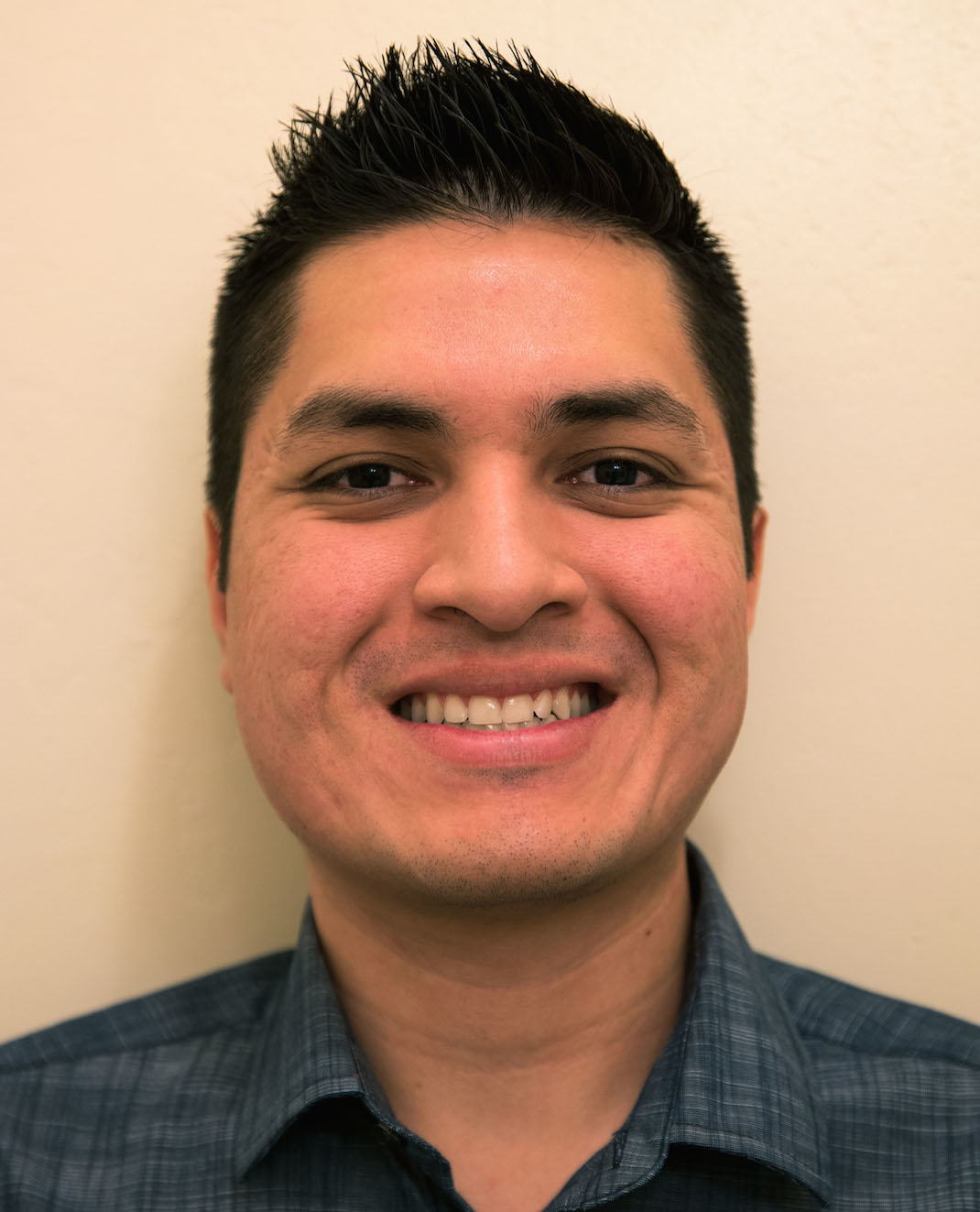 Jose Martinez helped a team in developing embedded systems of the Internet of Things (IoT) devices. He has planned to focus on researching energy harvesting circuits consisting of converting different types of energies such as radio waves, heat, and vibration to electrical energy to power low energy devices such as sensors. Consideration of cost,
performance, and efficiency in designing this circuit is at the upmost importance. An energy harvesting circuit that
combines these sources to produce to most power was the goal.
Jose Martinez helped a team in developing embedded systems of the Internet of Things (IoT) devices. He has planned to focus on researching energy harvesting circuits consisting of converting different types of energies such as radio waves, heat, and vibration to electrical energy to power low energy devices such as sensors. Consideration of cost,
performance, and efficiency in designing this circuit is at the upmost importance. An energy harvesting circuit that
combines these sources to produce to most power was the goal.
Security and Surveillance Systems:
 Cristal Ronquillo-Anzar studied security systems and aparatous for bussiness and
residentioal buildings. In this project, the main focus was on the
mechanics, algorithms, and optimization of the algorithms. In addition, existing issues in current technologies and products that are available in the market were analyzed for improvements.
Cristal Ronquillo-Anzar studied security systems and aparatous for bussiness and
residentioal buildings. In this project, the main focus was on the
mechanics, algorithms, and optimization of the algorithms. In addition, existing issues in current technologies and products that are available in the market were analyzed for improvements.
Energy Harvesting for Low-Power Wireless Devices:
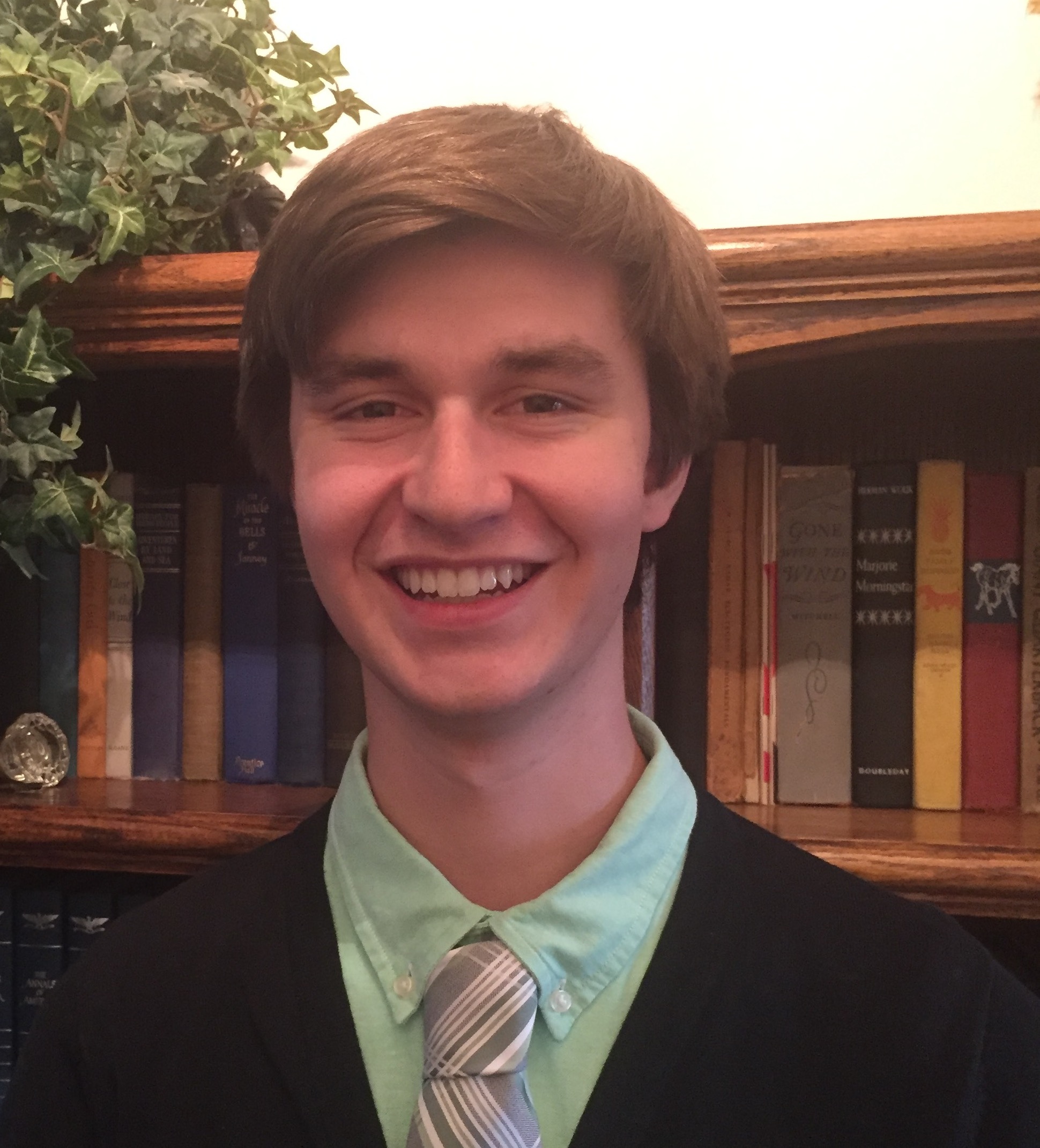 Jordan Root worked on Energy Harvesting to convert ambient energy into electrical energy with the purpose of both storing the energy and powering devices wirelessly. With an increased focus on making technology connected to the internet, a concern is how environmentally friendly the technological advances are. A popular example is using photovoltaic cells to harness solar energy to store the power in rechargeable batteries or super capacitors to use the energy later and to reduce the environmental cost. Ambient energy can also come from other sources, such as electromagnetic and radio frequency waves, but at a lower power density. If technology advanced to where electromagnetic and RF waves were to produce more energy, then wireless charging of a phone would be more commonplace, and wires would become a thing of the past. The goal was to increase the power density of electromagnetic waves to power devices wirelessly.
Jordan Root worked on Energy Harvesting to convert ambient energy into electrical energy with the purpose of both storing the energy and powering devices wirelessly. With an increased focus on making technology connected to the internet, a concern is how environmentally friendly the technological advances are. A popular example is using photovoltaic cells to harness solar energy to store the power in rechargeable batteries or super capacitors to use the energy later and to reduce the environmental cost. Ambient energy can also come from other sources, such as electromagnetic and radio frequency waves, but at a lower power density. If technology advanced to where electromagnetic and RF waves were to produce more energy, then wireless charging of a phone would be more commonplace, and wires would become a thing of the past. The goal was to increase the power density of electromagnetic waves to power devices wirelessly.
Embeded System Architecture Design for IoT Systems:
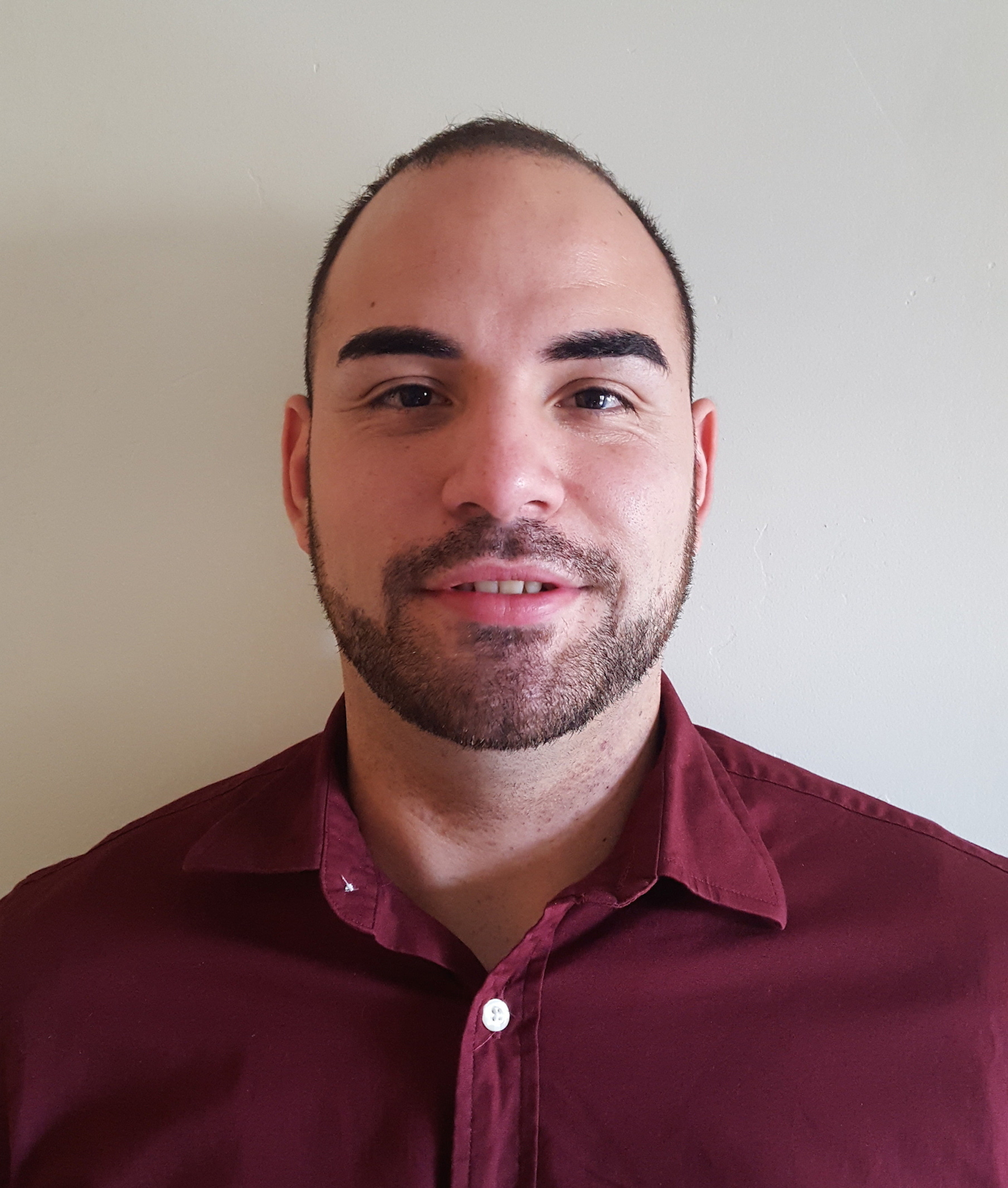 Gerardo Gonzales
worked on developing embedded system architectures of IoT devices used in health monitoring and surveillance. During the
course of this work, he defined and captures the design of a system, and investigated the cost limitation, complexity, determines a system’s integrity, such as reliability and safety, works within the confines of available elemental functionality (i.e., processing power, memory, battery life, etc.) and marketability of such products. In short, he proposed an embedded systems architecture that can be used to resolve these challenges early in a project. A case study demonstrating his method followed at the end of the project.
Gerardo Gonzales
worked on developing embedded system architectures of IoT devices used in health monitoring and surveillance. During the
course of this work, he defined and captures the design of a system, and investigated the cost limitation, complexity, determines a system’s integrity, such as reliability and safety, works within the confines of available elemental functionality (i.e., processing power, memory, battery life, etc.) and marketability of such products. In short, he proposed an embedded systems architecture that can be used to resolve these challenges early in a project. A case study demonstrating his method followed at the end of the project.
Image Processing and Optical Character Recognition:
 Daniel Medina studied an Optical Character Recognition (OCR) algorithm aiming to improve the
character recognition that is employed in many image processing applications. These improvements will help increase the continuing accuracy of OCR technology and find new ways with which to utilize OCR within a mobile application. OCR is essentially the segmentation of a pre-processed image file, followed by the feature extraction of the text within the image. Some popular products of OCR is Google Translate, PhotoMath, Adobe Acrobat, and Google Docs; allowing robust features like converting pdfs and images into text files as well as taking pictures of equation’s on your phone and using OCR to extract the text information so the application can solve the equations. The OCR within the applications hopes to improve on current screenshot picture accuracy with pictures taken in a dark lighting proving to be especially problematic. If OCR accuracy can be improved then many aspects of people’s lives can be made even easier such as on the fly translating of signs and billboards. Extracting text and using the information for specific everyday tasks to provide even more convenience to the everyday person was one of the main goals of his research.
Daniel Medina studied an Optical Character Recognition (OCR) algorithm aiming to improve the
character recognition that is employed in many image processing applications. These improvements will help increase the continuing accuracy of OCR technology and find new ways with which to utilize OCR within a mobile application. OCR is essentially the segmentation of a pre-processed image file, followed by the feature extraction of the text within the image. Some popular products of OCR is Google Translate, PhotoMath, Adobe Acrobat, and Google Docs; allowing robust features like converting pdfs and images into text files as well as taking pictures of equation’s on your phone and using OCR to extract the text information so the application can solve the equations. The OCR within the applications hopes to improve on current screenshot picture accuracy with pictures taken in a dark lighting proving to be especially problematic. If OCR accuracy can be improved then many aspects of people’s lives can be made even easier such as on the fly translating of signs and billboards. Extracting text and using the information for specific everyday tasks to provide even more convenience to the everyday person was one of the main goals of his research.
Reconfigurable Architecture Filter Design:
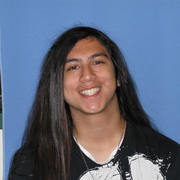 Jeremy Villa was developing an architecture for a reconfigurable FIR filter. FIR (Finite Impulse Response) filters are digital filters that are found in a wide variety of electronic devices such as cell phones, homeland security, smart sensors, and many other objects. The main goal was to optimize the processing speed for faster calculations, reduce the power consumption to allow for extended battery life in devices, and minimize the required area for the FIR filter for fabrication into an IC to cut the physical cost, as well as design an interface to allow an end-user to configure the FIR filter to their specific application.
Jeremy Villa was developing an architecture for a reconfigurable FIR filter. FIR (Finite Impulse Response) filters are digital filters that are found in a wide variety of electronic devices such as cell phones, homeland security, smart sensors, and many other objects. The main goal was to optimize the processing speed for faster calculations, reduce the power consumption to allow for extended battery life in devices, and minimize the required area for the FIR filter for fabrication into an IC to cut the physical cost, as well as design an interface to allow an end-user to configure the FIR filter to their specific application.
VLSI Implementation of Digitl Filters:
 Bowen Wang studied design and implementation of an optimized Finite Impulse Response (FIR) filter for various
applications in industry. Some of its applications include signal separation and restoration, channelization, smart sensors, industrial control, medical monitoring and diagnostics, etc. Aside from the exceptional performance, these filters are widely used in digital signal processing due to the fact that they are linear phase and inherently stable; however, they generally require more computational procedures. For this project, the goal was to create a low complex filter with improved performance by altering its computational algorithm and internal architecture.
Bowen Wang studied design and implementation of an optimized Finite Impulse Response (FIR) filter for various
applications in industry. Some of its applications include signal separation and restoration, channelization, smart sensors, industrial control, medical monitoring and diagnostics, etc. Aside from the exceptional performance, these filters are widely used in digital signal processing due to the fact that they are linear phase and inherently stable; however, they generally require more computational procedures. For this project, the goal was to create a low complex filter with improved performance by altering its computational algorithm and internal architecture.
VLSI Architecture Design and Implementation of 3D Image Recognition Algorithms:
 Maria G. Borjas investigated the hardware implementation of accelerator architectures that will improve image processing systems. The implementation of complex algorithms on a single chip will enhance real-time performance in areas that include, but are not limited to image and video resolution, power consumption and robustness. Her research was focused on mending the issue of power consumption and memory bandwidth by utilizing said accelerator architectures. Ultimately, her research aimed to advance the rapidly growing areas of security surveillance and medical imaging.
Maria G. Borjas investigated the hardware implementation of accelerator architectures that will improve image processing systems. The implementation of complex algorithms on a single chip will enhance real-time performance in areas that include, but are not limited to image and video resolution, power consumption and robustness. Her research was focused on mending the issue of power consumption and memory bandwidth by utilizing said accelerator architectures. Ultimately, her research aimed to advance the rapidly growing areas of security surveillance and medical imaging.
IoT Platform and Sensor Networks for Industrial Applications:
 Tim Guenther worked on IoT platforms and technologies for use in a connected industrial environment. While the
popularity of the Internet of Things (IoT) continues to grow, and the need for wireless, connected, "smart" devices with
it, not many companies are utilizing IoT solutions. The industrial sector, specifically, could greatly benefit from this
new technology. He investigated the shortcomings of these products and technologies and then propose a solution to
overcome such issues.
Tim Guenther worked on IoT platforms and technologies for use in a connected industrial environment. While the
popularity of the Internet of Things (IoT) continues to grow, and the need for wireless, connected, "smart" devices with
it, not many companies are utilizing IoT solutions. The industrial sector, specifically, could greatly benefit from this
new technology. He investigated the shortcomings of these products and technologies and then propose a solution to
overcome such issues.
Voice and Speech Recongntion:
 David Stanely worked on improving the voice recognition algorithms. In his research, he was specifically
developing speaker-recognition algorithms that can be integrated to current security systems to improve their
performance. In this project, the main focus was on the development and optimization of the algorithms. Additionally,
current technologies and products are being examined to determine possible improvements and ways of integrating speaker recognition into them. Speaker recognition faces obstacles like improving overall accuracy, efficiency, and automation.
David Stanely worked on improving the voice recognition algorithms. In his research, he was specifically
developing speaker-recognition algorithms that can be integrated to current security systems to improve their
performance. In this project, the main focus was on the development and optimization of the algorithms. Additionally,
current technologies and products are being examined to determine possible improvements and ways of integrating speaker recognition into them. Speaker recognition faces obstacles like improving overall accuracy, efficiency, and automation.
Coordinated Multipoint Transmission and Reception in LTE-Advanced:
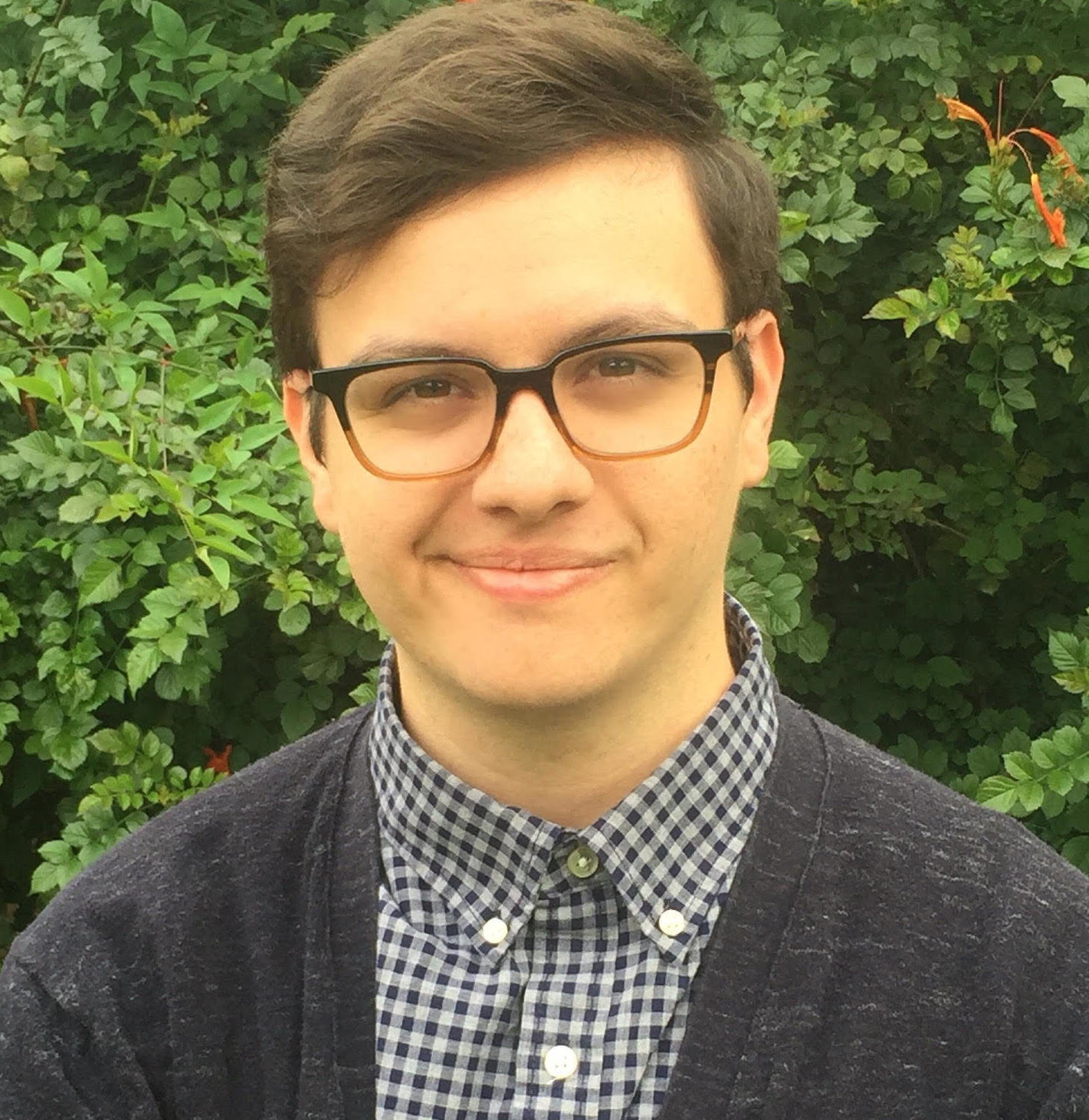 Korey Cain designed a new Coordinated multi-point (CoMP) communication technique for wireless communication systems (e.g. in 3GPP LTE-Advanced standard) in order to mitigate intercell interference and improve system performance especially for cell-edge users. In multi-cell wireless networks, CoMP achieves these objectives through cooperation of multiple geographically separated base stations (BSs), where the cooperation can be considered in transmission of data in downlink or reception of users’ signals in uplink. Downlink COMP mainly uses joint transmission (JT) or coordinated scheduling/coordinated beamforming (CS/CB) approaches to effectively cancel the interference. Uplink CoMP performs joint reception (JR) where multiple BSs simultaneously process the received signals from user equipments (UEs) to improve the quality of detected signals.
Korey Cain designed a new Coordinated multi-point (CoMP) communication technique for wireless communication systems (e.g. in 3GPP LTE-Advanced standard) in order to mitigate intercell interference and improve system performance especially for cell-edge users. In multi-cell wireless networks, CoMP achieves these objectives through cooperation of multiple geographically separated base stations (BSs), where the cooperation can be considered in transmission of data in downlink or reception of users’ signals in uplink. Downlink COMP mainly uses joint transmission (JT) or coordinated scheduling/coordinated beamforming (CS/CB) approaches to effectively cancel the interference. Uplink CoMP performs joint reception (JR) where multiple BSs simultaneously process the received signals from user equipments (UEs) to improve the quality of detected signals.
Wireless Sensor Network Architecture Design:
 Justin Brownlow investigated hardware architecture designs for wireless sensor networks. Such networks create a way to connect with our surrounding environments, allowing for measurement of various physical conditions. WSNs are implemented in a wide range of applications in industrial, medical, military, and various other fields. Following his research of this topic, he looked to design and implement an architecture that will fulfill and improve the various necessities of a wireless sensor network, which include low power consumption and low cost.
Justin Brownlow investigated hardware architecture designs for wireless sensor networks. Such networks create a way to connect with our surrounding environments, allowing for measurement of various physical conditions. WSNs are implemented in a wide range of applications in industrial, medical, military, and various other fields. Following his research of this topic, he looked to design and implement an architecture that will fulfill and improve the various necessities of a wireless sensor network, which include low power consumption and low cost.
Wireless Home Security System Integration:
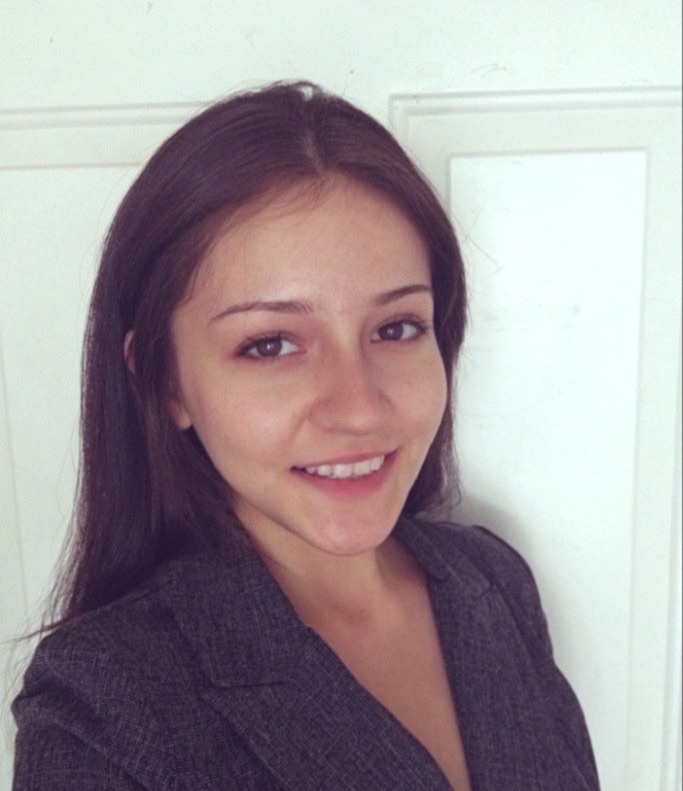 Anneiz Cea studied developing a mobile application for wireless communication with a reformed home security system. Providing surveillance and interaction with one’s security system wirelessly from anywhere is the main proposition of her application. The application supposed be able to receive and send data that will include the status of the security components for mobile monitoring and remote administration for accessibility.
Anneiz Cea studied developing a mobile application for wireless communication with a reformed home security system. Providing surveillance and interaction with one’s security system wirelessly from anywhere is the main proposition of her application. The application supposed be able to receive and send data that will include the status of the security components for mobile monitoring and remote administration for accessibility.
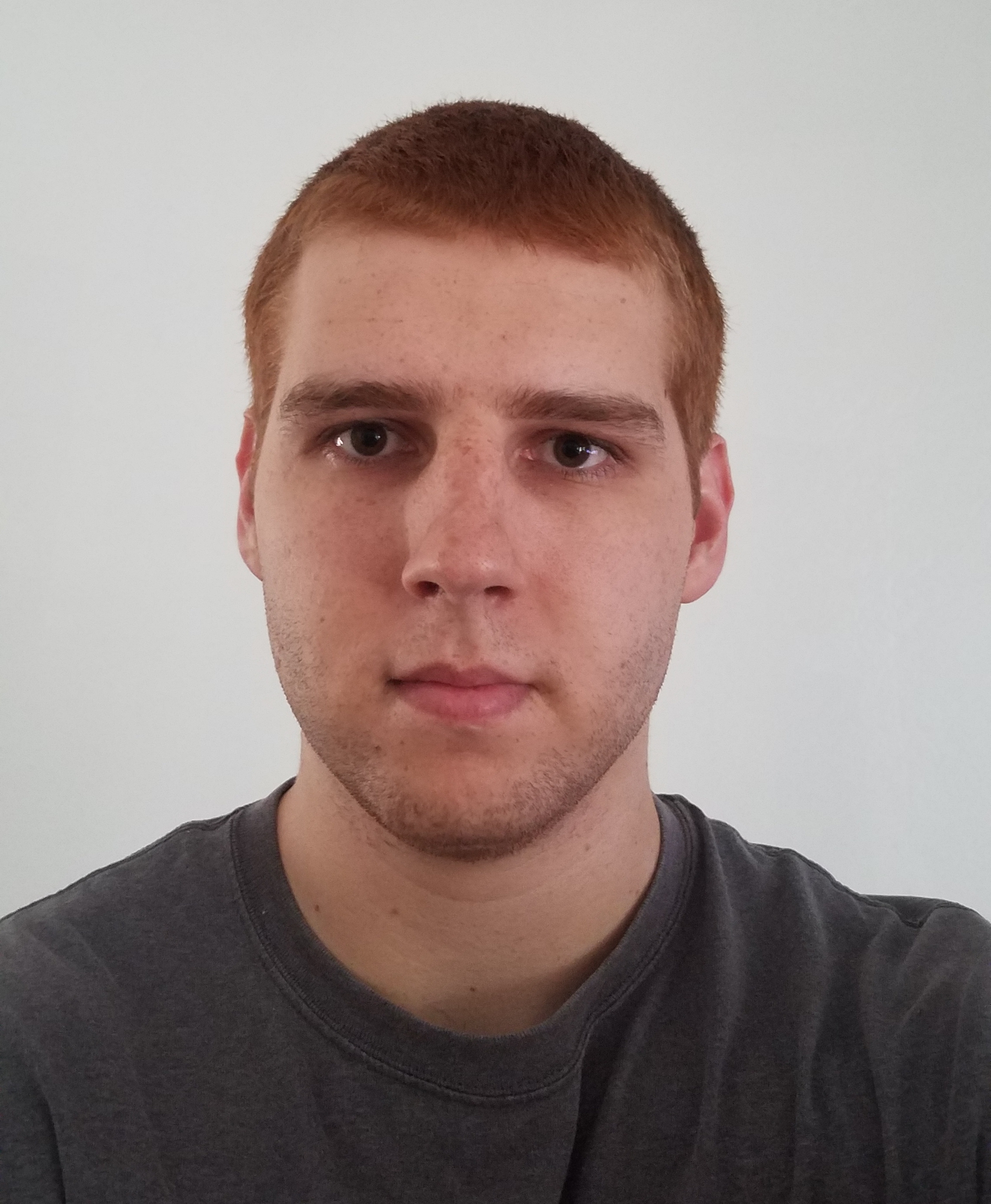 Jason Quinton investigating new transmission schemes in wireless communications to achieve increased throughput and signal reliability. General topics of interest include OFDM modulation, Massive MIMO, and coding data in space and time(STC). Using MatLab, successfully created and simulated a space-time coded wideband massive MIMO (STCWM-MIMO) system which performs significantly better than an uncoded wideband massive MIMO system. Future research includes investigating a new multicarrier modulation scheme and it's potential benefits and restrictions.
Jason Quinton investigating new transmission schemes in wireless communications to achieve increased throughput and signal reliability. General topics of interest include OFDM modulation, Massive MIMO, and coding data in space and time(STC). Using MatLab, successfully created and simulated a space-time coded wideband massive MIMO (STCWM-MIMO) system which performs significantly better than an uncoded wideband massive MIMO system. Future research includes investigating a new multicarrier modulation scheme and it's potential benefits and restrictions.
MIMO Space-Time Code Design for Wireless Communication:
 Jeremy Ice is working with the VLSI circuit design team to come up with an optimal VLSI architecture for
space-time coding techniques used in next genereation of wireless communication
systems. In this research, the focus is on designing of a MIMO-OFDM physical layer that follows the IEEE standard 802.11n.
Different VLSI techniques are examined and analyzed to obtain an efficient low-power architecture. In our experiments,
we propose a pipelined architecture to the baseline MIMO-OFDM physical layer. By exploiting the
dynamic reconfiguration, the proposed MIMO-OFDM system can adapt to various operating modes. The team also present experimental results and analysis regarding dynamic reconfiguration.
Jeremy Ice is working with the VLSI circuit design team to come up with an optimal VLSI architecture for
space-time coding techniques used in next genereation of wireless communication
systems. In this research, the focus is on designing of a MIMO-OFDM physical layer that follows the IEEE standard 802.11n.
Different VLSI techniques are examined and analyzed to obtain an efficient low-power architecture. In our experiments,
we propose a pipelined architecture to the baseline MIMO-OFDM physical layer. By exploiting the
dynamic reconfiguration, the proposed MIMO-OFDM system can adapt to various operating modes. The team also present experimental results and analysis regarding dynamic reconfiguration.
Human Body Localization and Tracking Using RF Wireless Signals:
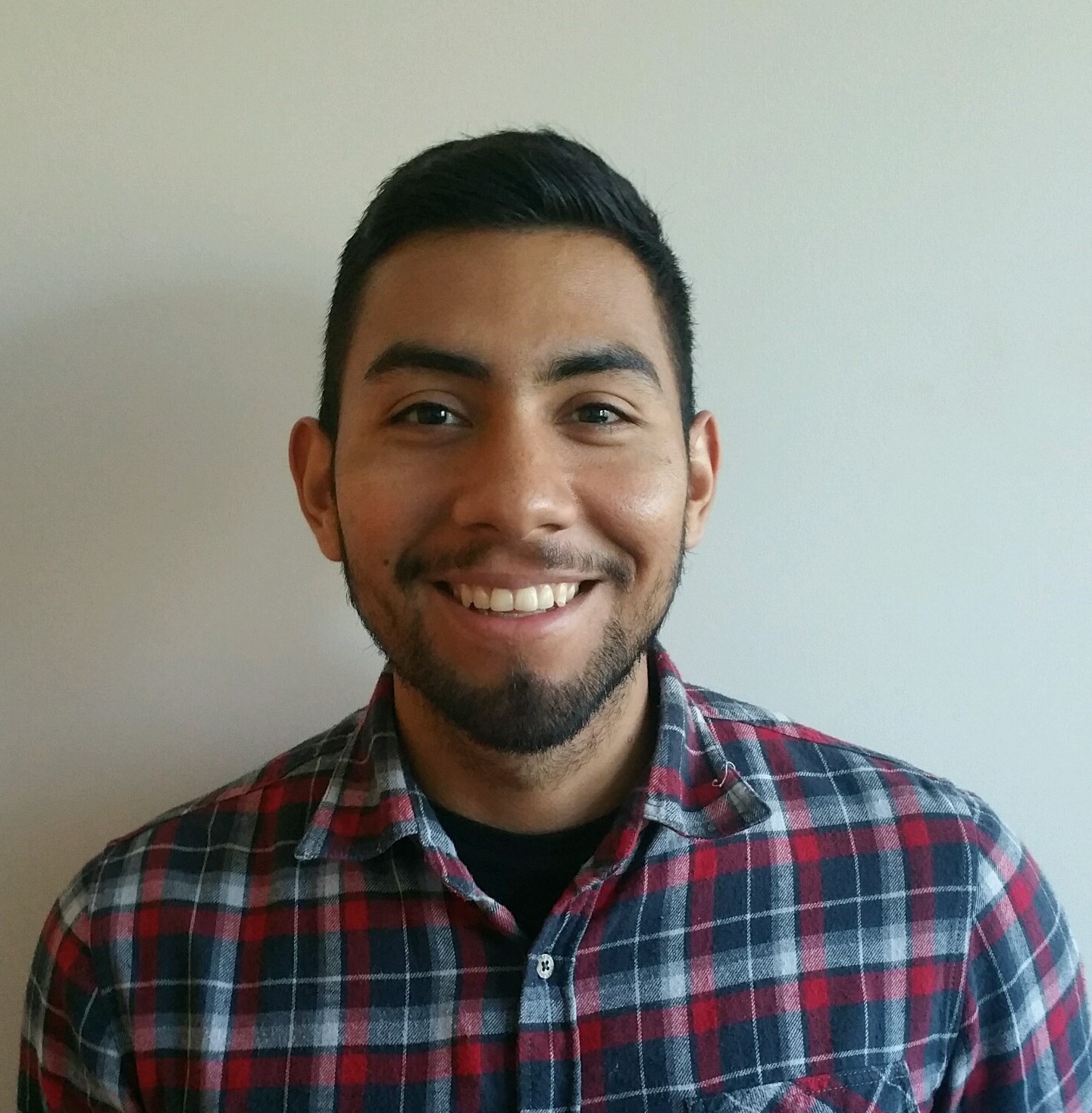 Emerson Argueta is working on researching and contributing to the field of research dealing with localization of humans through RF wireless signals, specifically in developing an imaging model for such reflected signals so that they can be analyzed through computer vision methods. By transmitting RF signals and receiving them, it is possible to calculate the distance of their reflection. Because human bodies reflect RF these wireless signals, it is possible, through various techniques, to localize a human. The research will be focused on RF wireless signals as a mode for sensing. The research will encompass tracking multiple subjects in indoor environments with higher resolution, methods of creating a higher resolution skeletal image of subjects using super-resolution techniques, detecting human vital signs, and using machine learning algorithms to help identify different subjects through data acquired by RF wireless sensing.
Emerson Argueta is working on researching and contributing to the field of research dealing with localization of humans through RF wireless signals, specifically in developing an imaging model for such reflected signals so that they can be analyzed through computer vision methods. By transmitting RF signals and receiving them, it is possible to calculate the distance of their reflection. Because human bodies reflect RF these wireless signals, it is possible, through various techniques, to localize a human. The research will be focused on RF wireless signals as a mode for sensing. The research will encompass tracking multiple subjects in indoor environments with higher resolution, methods of creating a higher resolution skeletal image of subjects using super-resolution techniques, detecting human vital signs, and using machine learning algorithms to help identify different subjects through data acquired by RF wireless sensing.
Information Processing and Learning for Dynamic and Social Networks:
 Taylor Redden is researching estimation and information processing over dynamic networks with time varying topologies. The purpose of the research is to find algorithms that accurately and efficiently used in these networks. The research tasks include modeling and inference for information diffusion and rumor spreading, social media computing and networking, data mining, machine learning, and statistical inference frameworks and algorithms for handling big data from social networks. The second line of this research involves in attribution models for marketing and advertising, trend prediction, recommendation systems and crowd sounding.
Taylor Redden is researching estimation and information processing over dynamic networks with time varying topologies. The purpose of the research is to find algorithms that accurately and efficiently used in these networks. The research tasks include modeling and inference for information diffusion and rumor spreading, social media computing and networking, data mining, machine learning, and statistical inference frameworks and algorithms for handling big data from social networks. The second line of this research involves in attribution models for marketing and advertising, trend prediction, recommendation systems and crowd sounding.
VLSI Implemenataion of Detection Techniques in Massive MIMO Systems:
 Ian Ives is working on detection and estimation techniques for Multiple Input Multiple Output (MIMO) systems. This will include MIMO systems working with two transmit and receive antennas to massive MIMO systems with hundreds of antennas. MIMO detection and estimation falls into two categories of boosting capability: devising a better algorithm and reducing computational complexity. Devising a better algorithm involves balancing reducing error a signal produces after being transmitted through a wireless channel and reducing the strain a device will receive by trying to follow that algorithm. Reducing computational complexity can be grouped with making a better algorithm, but are not the same. Reducing computational complexity involve activities such as lowering the number of calculations a device would have to make and doing those calculations on a simpler/smaller circuit.
Ian Ives is working on detection and estimation techniques for Multiple Input Multiple Output (MIMO) systems. This will include MIMO systems working with two transmit and receive antennas to massive MIMO systems with hundreds of antennas. MIMO detection and estimation falls into two categories of boosting capability: devising a better algorithm and reducing computational complexity. Devising a better algorithm involves balancing reducing error a signal produces after being transmitted through a wireless channel and reducing the strain a device will receive by trying to follow that algorithm. Reducing computational complexity can be grouped with making a better algorithm, but are not the same. Reducing computational complexity involve activities such as lowering the number of calculations a device would have to make and doing those calculations on a simpler/smaller circuit.
